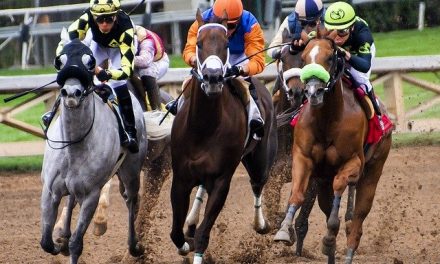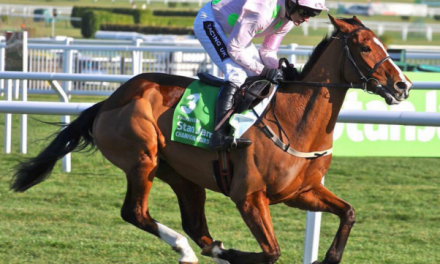Common Prop Bets Made During a Horse Race
Horse racing offers a wide range of ways for bettors to engage beyond simply picking the winner. Particularly during high-profile events like the Kentucky Derby, prop bets open up more opportunities to participate and test one’s knowledge of the sport. Prop bets often explore areas that traditional betting does not cover. These bets might not necessarily relate to the direct outcome of a race but can be placed on unique aspects, ranging from head-to-head matchups between horses to the number of mint juleps consumed during the event. A few of these bets and their variances will be discussed next.
Head-to-Head Bets and Gate-to-Wire Winners
Head-to-head bets are some of the simpler forms of horse-racing prop bets. These involve wagering on which of two or more horses will finish in a better position. Instead of focusing on the entire field, bettors are tasked with selecting the better-finishing horse among a set of chosen entries. For instance, a head-to-head bet could pit Just a Touch against Catching Freedom, challenging bettors to decide which of the two will cross the line first. These bets often escalate to include a third horse, but the mechanics remain the same; the favored horse doesn’t necessarily have to win the race, only to beat its grouped competitors.
Another popular prop bet is wagering on whether a horse leads the race from start to finish, also known as a gate-to-wire winner. These bets reflect the challenges inherent in a horse maintaining the lead throughout an entire race. Due to the difficulty of sustaining the lead from gate to wire, “no” bets are often favored. However, in situations where a horse—or the conditions of the racetrack—suggest a strong performance, bettors may increase their interest in this particular wager. Historical data from high-profile events such as the Kentucky Derby provide valuable insights for making these decisions.
Exotic and Quantitative Prop Bets
Some prop bets focus on less performance-driven aspects of the race. An unusual but increasingly popular category is wagering on characteristics of the race that don’t directly impact the actual running of the horses. For instance, bettors find themselves analyzing the number of words in the winner’s name. The options are generally one, two, or more than three words, offering a chance to look at the top entries and their names to gauge which bet might be safest. Although this seems unrelated to any racing metrics, analyzing trends in horse names could hypothetically offer insight into potential outcomes.
Equally disconnected from the actual race but undeniably interesting is the Mint Julep Count bet. Here, bettors are tasked with predicting the number of mint juleps served during the Kentucky Derby event. Sportsbooks generally set an over/under total, and bettors wager on whether the final count will exceed or fall below that figure. Since the Kentucky Derby is renowned for serving upwards of 120,000 mint juleps annually, understanding the crowd size, trends in past julep consumption, and even weather predictions might play into determining how this prop bet should be handled.
Other fun prop bets emerge around events adjacent to the race itself. For example, bets can be placed on the gender of the winning jockey. Given the historical dominance of male jockeys, odds favor their continued success. However, an understanding of emerging talents and careful analysis of statistics can inform bettors on how they might better forecast an upset.
Another adjacent activity that draws betting attention revolves around the singing of the national anthem. Prop bets around the anthem focus on its length, often setting an over/under of two minutes. Additional bets can even be placed on whether the singer makes a mistake during the performance.
Innovative Approaches to Maximizing Returns on Prop Bets
In the world of horse racing, engaging with prop bets can enhance the overall betting strategy if approached thoughtfully. One emerging method is the use of statistical analyses combined with historical data. By examining past performances, betting patterns, and even the specific conditions of a famed race like the Kentucky Derby, bettors can gain insights that reduce uncertainty. This method encourages the examination of trends such as the performance of certain jockeys under particular weather conditions or the historical likelihood of a horse maintaining a lead from the gate to the wire.
Furthermore, the incorporation of various promotional offers can serve as an adjunct to the analytical approaches described. For instance, many online sportsbooks offer sports betting promos that provide additional betting credits or enhanced odds for specific prop bets during major events. Utilizing these promotions, alongside well-researched betting strategies, not only extends the available bankroll but also maximizes potential gains. By strategically leveraging these offers, bettors can mitigate risks and potentially increase their profits, making the process of engaging with horse racing prop bets both more effective and rewarding.
Betting on Multiple Race Outcomes and the Triple Crown
Traditional betting methods inevitably gain attention in any discussion of horse-racing prop bets, particularly exacta and trifecta bets. Despite the traditional label, these bets require bettors to accurately predict the top finishers in a specific order, elevating them to a higher level of complexity and risk typical of prop bets. In an exacta wager, bettors predict the first- and second-place finishers in the proper sequence. Trifecta wagers, meanwhile, require selecting the top three finishers in order. While difficult, these bets can unlock larger payouts due to the precision needed to win.
The Triple Crown offers a season-long equivalent to exacta or trifecta betting, with bettors able to place prop wagers on whether one horse wins the Kentucky Derby, the Preakness Stakes, and the Belmont Stakes consecutively. Due to its difficulty, Triple Crown winners are rare, which in turn impacts both the odds and the interest in these prop wagers. Nevertheless, historical performances, horse conditions, and jockey records provide the foundational data required to engage with bets of this nature.
Understanding horse race prop betting extends beyond single-race performances or even seasonal wagering styles. Bettors can also explore exotic bets in more horizontal and vertical formats, including types such as Pick 3 or superfecta bets. For example, horizontal exotic bets like the Pick 3 involve selecting the winning horse across three consecutive races, while vertical exotic bets like superfecta require the bettor to predict the top four finishers in proper order. Although bettors might combine these approaches in an attempt to reduce risks, the nature of prop bets keeps them inherently advanced and more speculative than simple win, place, or show betting.
Conclusion
Prop bets in horse racing go beyond the traditional winner-focused wagers, offering bettors creative and engaging opportunities to test their knowledge and strategies. From analyzing historical trends to leveraging promotional offers, a thoughtful approach to prop betting can make major events like the Kentucky Derby even more rewarding. By combining analytical tools with innovative betting methods, bettors can navigate the complexities of prop bets while enhancing their overall experience in the world of horse racing.





